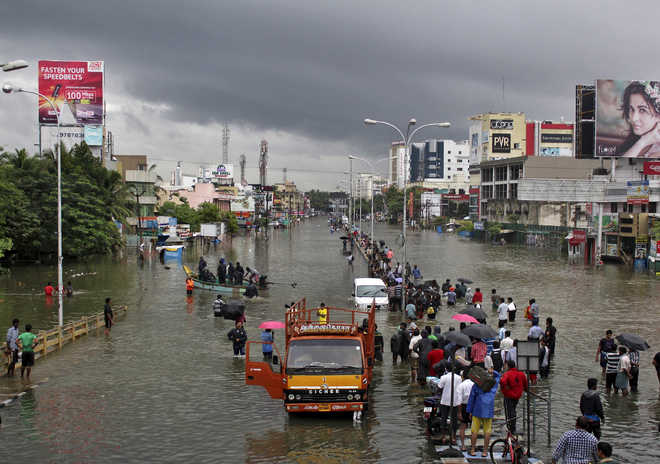The power of El Niño
Steve Connor
Forest fires in tinder-dry Indonesia, a disappointing monsoon in India and even the recent unusually warm, wet and windy weather in Britain are all being blamed on a record El Niño developing in the South Pacific, which meteorologists believe could become the biggest in living memory.
El Niño is a temporary natural warming of the surface sea in the tropical East Pacific as it spreads across the equatorial Pacific, causing fluctuations and reversals to the normal trade winds. It triggers major changes to the weather patterns across the world, from Australia and India to Africa and Central America.
The event appears once every few years at variable intensity. It gets its name from the Spanish for boy-child, a seasonal reference to Christmas. But this winter it shaped up to be as large, or even larger, than the notorious El Niño of 1997-98, the biggest since accurate records began, according to the Met Office.
“El Niño has continued to strengthen and it’s already about on a par with the largest event in living memory, which occurred in 1997-98. However, it’s still too early to say whether it’s going to be the biggest ever,” says Jeff Knight, a climate modeller at the Met Office’s Hadley Centre, near Exeter.
The heat index measured over the surface of a vast tract of ocean in the equatorial Pacific already suggests that El Niño is as big as anything seen before, and computer models are forecasting that it will only get stronger over the coming weeks and months, Mr Knight said. A strong El Niño, combined with increasing levels of carbon dioxide in the atmosphere, also means that the world became the warmest last year on record, breaking the previous year’s record to become the hottest since 1880, when the instrumental record began.
However, when El Niño develops to such intensity, it has a major impact around the world. The exceptionally dry weather in Indonesia, which has fanned the flames of the forest fires in the region last year, is set to continue as El Niño delays the onset of the rainy season, says Mr Knight. India declared an official drought year after a 14 per cent decline in the monsoon rains — although food shortages had been largely averted thanks to government planning and stockpiling.
Globally, however, food prices are set to rise further, according to the UN’s Food and Agriculture Organisation (FAO). The cost of food last year rose largely because of the expectation that El Niño and bad weather will curb food output in 2016. Sugar prices are expected to rise after late rains delayed harvesting in Brazil, while the extended dry season in South-east Asia and Indonesia is causing concern over the production of vegetable oil, according to the FAO.
A strong El Niño is also known to disturb the westerly jet stream, a ribbon of fast-moving air circumnavigating the northern hemisphere. This could increase the chances of the kind of weather patterns seen recently in Britain, which are caused by a southerly “kink” in the jet stream over the North Atlantic, sending the a south-westerly stream of warm, wet and windy weather across the UK. “In Britain, the impact of El Niño is nowhere near as marked as in other parts of the world. But it does tip the balance a little bit more in favour of wet and windy weather. It makes it more probable,” Mr Knight said.
A strong El Niño can also cause wetter weather in Central America, the southern United States and East Africa, increasing the risk of malaria as the mosquito population rises. But it’s not all bad news: after a five-year drought, California could actually benefit from increased rainfall. — The Independent









